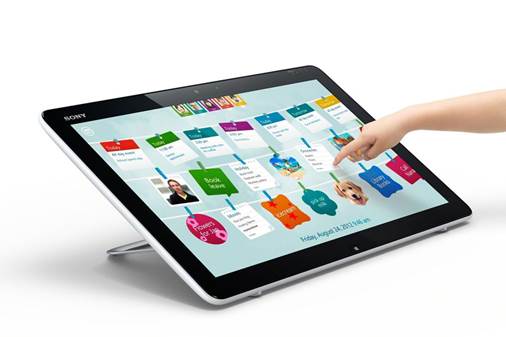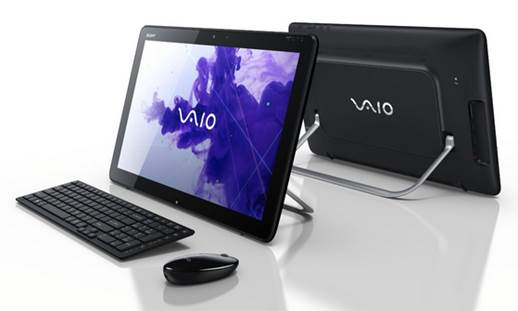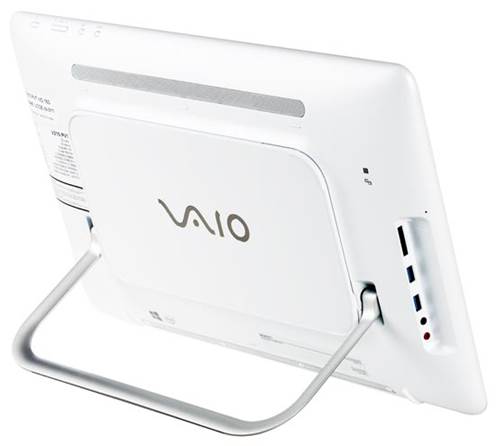The other machines in this test all follow
relatively traditional blueprints, with chunkier designs that are held up by
rear-mounted kickstands, but Sony has done something a little different with
its Vaio Tap 20. The big change can be found around the back: this machine
includes a 3500mAh battery.

The
Sony Vaio Tap 20 is yet another experiment to try and make the most of Windows
8
It's an unusual addition for an all-in-one
PC, and it turns this machine into a giant tablet – albeit one that's really
only designed to be carted around the house without being turned off. The
cleverly-designed kickstand folds completely flush against the rear of the
chassis, so it can be laid flat on the floor for the kids to use, and build
quality is up to scratch throughout the white, matte plastic enclosure.
Sony has even crammed in some component
access behind the rubberized rear panel, but the Vaio isn't without its issues.
The 5.1kg device isn't exactly an iPad on the scales, and the battery doesn't
last too long: it ran out of juice after 2hrs 27mins in the light-use test we
use for laptops.

Sony
has even crammed in some component access behind the rubberized rear panel, but
the Vaio isn't without its issues.
The 20" 1600 x 900 screen is this
month's lowest for both size and resolution, but it makes up for the pixel
paucity elsewhere. The averaged Delta E of 4.3 isn't far behind the Asus and HP
panels, so colors are accurate, and the screen is bright too. Problems are
minor, with the deepest black shades being crushed together at the low end, but
this screen is ideal for browsing the web or playing games.
Unfortunately, the air of quality isn't
carried over to the internals. The Core i5-3317U is one of Intel's most frugal
low-power parts. Its 1.7GHz speed and mobile architecture provide evidence of
its limited pace, and this middling chip sauntered to a score of 0.65 in our
benchmarks – one of the lowest here.

The
clever stand works in landscape, portrait and folds flat so you can lie the PC
on a table
The Intel HD Graphics 4000 core didn't help
the Sony stand out in our gaming tests either, with a result of 21fps in the Low-quality
benchmark the worst of any in this group. We never had issues with Windows 8 or
any of its applications, but this machine simply isn't cut out for more
demanding computing.
The rest of the specification is pretty
slim line too. This is the only system in this test to lack any optical drive,
there's no TV tuner, and the 1TB hard disk isn't particularly quick.

Ethernet
(RJ45) port and power jack and Memory card reader, 2 x USB 3.0, headphone and
Mic jacks
It's not the most extensive or powerful specification,
and we're also not convinced by the battery – it’s gimmicky and we're not sure
how useful it'll actually be in the real world. The smaller, lower-resolution
screen doesn't help either, and the price is a little high for less than the
$1,499 Sony wants for this machine, you could buy the test-winning Asus, so
that's the machine we'd choose.
|
Details
§ Price:
$1,499
§ Website:
www.sony.com
§ Ratings:
7/10
§ Resolution:
1600 x 900
§ Screen
size: 20in
§ Processor
speed: 1.7GHz
§ Processor
socket: LGA 1155
§ Interface:
SATA3
§ Total
storage capacity: 1,024GB
§ Operating
system : Windows 8
|